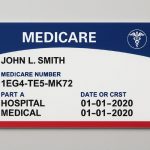Falls are a serious concern for older adults, but the good news is that simple at-home exercises can significantly improve balance and stability. Maintaining strength and coordination becomes crucial as we age to prevent dangerous falls and stay independent.
These six easy exercises require no special equipment and can be done in the comfort of your living room. By incorporating just 10-15 minutes of these movements into your daily routine, you’ll build lower-body strength, enhance flexibility, boost your confidence in everyday activities, and reduce your risk of falls.

After age 50, reflexes and coordination naturally slow, strength decreases, and eyesight declines. All this can lead to reduced balance and increased fall risk. Carewell shares six easy at-home exercises for seniors to improve balance and prevent falls.
When you’re young and agile, climbing stairs, playing hopscotch, or riding a bike is easy. Balance is something you rarely think about, because it comes naturally.
Unfortunately, that begins to change as you get older.
After age 50, reflexes and coordination slow, muscle mass and strength decline, and changes in the eyes affect depth perception and night vision.
These changes significantly increase the risk of a fall, fracture, or more serious injury.
You may be unable to turn back the clock and recapture your youth, but you can improve balance and prevent falls with easy at-home exercises.
Setting aside 20-30 minutes daily to build muscle and improve coordination can help you stay mobile for years.
At Carewell, we’ve put together six easy at-home exercises to improve your balance and prevent falls.
You can do all these with items you already have at home to help improve your balance and stand on more solid ground.
VIDEO: The One-Legged Stand for Seniors
1. The One-Legged Stand
Did you ever hold balance competitions with your childhood friends or siblings? If so, you’ll probably recognize this exercise.
Stand behind a table or desk and place your hands on top.
Keep your right foot planted on the ground and lift your left foot. Hold the position for 30 seconds, then switch feet.
After you’ve practiced for a few weeks or months, stop using the table.
The goal is to stand on each leg for at least a minute without external support.
VIDEO: Rock the Boat Exercise for Seniors
2. Rock the Boat
Begin this exercise by standing behind a table or chair with your feet together.
Once you’re centered, lift your left leg off the floor and out to the side. Hold for two to three seconds and bring your foot back. Repeat with your right leg.
Do at least three reps on each side to maximize the balance-boosting effects.
VIDEO: Walk the Tightrope Exercise for Seniors
3. Walk the Tightrope
This exercise sounds a little scary, but no balancing poles, safety nets, or skyscrapers are involved.
Start by laying a long string or jump rope on the floor. If these items aren’t available, imagine a straight line that begins at your feet and extends outward.
Lift your arms and hold them out to your sides for balance. Walk without veering from the line for 10 to 20 steps, heel-to-toe, or from one end of the room to the other.
Once you’ve finished the line, turn around and return the other way. Repeat four times.
To make it more challenging, hold your foot in the air for two or three seconds per step.
VIDEO: Shuffle Step Exercise for Seniors
4. Shuffle-Step
This exercise is similar to dancing.
Stand up and put your feet together. While facing forward, step to the right and slide your left foot over.
Do this from one side of the room to the other. Once you reach the wall, shuffle-step back the other way.
After you get the hang of it, try speeding up your footwork. To add an extra challenge, place small obstacles in your path, such as a bean bag or a rolled-up pair of socks.
VIDEO: Sit-to-Stand Exercise for Seniors
5. Sit-to-Stand
For this exercise, you’ll need a table or desk and a chair without wheels. Sit down and put the chair behind the table, as if you were preparing to eat a meal.
Plant your feet firmly on the ground, straighten your back, and scoot your buttocks forward to sit near the front of the chair.
Lean with your chest over the table. Shift your body weight forward, squeeze your glutes, and slowly stand up. After 10 seconds or so, slowly sit back down.
Try to do this exercise without using your hands, but if you feel wobbly or unstable, you can lean on the table or desk for support.
VIDEO: Mini Squats Exercise for Seniors to Build Strength
6. Squats
Squats are an effective way to build strength; a strong core is key to good balance.
Start this exercise with your feet shoulder-width apart and your hands at your sides. Tighten your abs, bend your knees, and push your buttocks out like you’re sitting down in a chair.
You don’t have to go down too deep; a 30-degree angle is fine.
Once you achieve the squat position, slowly stand up. Repeat several times until you feel your quads and glutes starting to burn.
Hold a five-pound barbell in each hand to make the exercise a little more challenging.
Exercise Reduces Fall Risk for Aging Adults
By incorporating these and other simple exercises into your regular workout routine, you can slow age-related declines in balance and significantly reduce the risk of falls.
Before starting any new exercise regimen, schedule an appointment with your primary care physician.
Recommended for you:
- Chair Yoga for Seniors: Reduce Pain and Improve Health
- 12 Easy and Gentle Seated Stretching Exercises for Seniors in 4 Minutes
- 3 Easy Tai Chi Videos for Seniors Prevent Falls, Improve Balance and Strength
Guest contributor: Carewell is a family-run company with a mission to improve the lives of caregivers and their families. It’s the most trusted and convenient online source of home health products and information for family caregivers.
About the Author
Carewell is a family-run company with a mission to improve the lives of caregivers and their families. It’s the most trusted and convenient online source of home health products and information for family caregivers.












